Volume 10 Issue 2 pp. 192-203 • doi: 10.15627/jd.2023.16
Integrative Lighting Design: How to Optimize Visual and Non-visual Effects in a Cell Office
Laura Bellia,a Francesca Fragliasso, a Matteo Seraceni,b Giulia Sodano⁎,a
Author affiliations
a Department of Industrial Engineering University of Naples “Federico II” - 80138 Naples, Italy
b Hera Luce – 40127 Bologna, Italy
*Corresponding author.
bellia@unina.it (L. Bellia)
francesca.fragliasso@unina.it (F. Fragliasso)
matteo.seraceni@gruppohera.it (M. Seraceni)
giulia.sodano@unina.it (G. Sodano)
History: Received 7 September 2023 | Revised 15 November 2023 | Accepted 26 November 2023 | Published online 29 December 2023
Copyright: © 2023 The Author(s). Published by solarlits.com. This is an open access article under the CC BY license (http://creativecommons.org/licenses/by/4.0/).
Citation: Laura Bellia, Francesca Fragliasso, Matteo Seraceni, Giulia Sodano, Integrative Lighting Design: How to Optimize Visual and Non-visual Effects in a Cell Office, Journal of Daylighting 10 (2023) 192-203. https://dx.doi.org/10.15627/jd.2023.16
Figures and tables
Abstract
The objective of this paper is to outline fundamental principles for the electric lighting design of workplace environments such as offices. The study considers both the suggested guidelines and values for non-visual light design and the specifications for visual tasks dictated by the EN 12464-1:2021. When properly balanced, the two distinct procedures – for the visual task and for the non-visual responses - can lead to an integrated lighting design: This integration ensures that the office environment provides both well-being and optimal visibility for tasks that require good lighting conditions. Various lighting scenarios, using only electric lighting, were analysed under different conditions and parameters (three different photometries, three different spectra and three environmental wall reflectance configurations). The choice of luminaire photometry is critical in achieving a well-rounded integrated design, as observed in the examination of various scenarios. Depending on the goals set, the designer can also decide whether to use a spectrum that stimulates the eye the most: Different spectra with similar correlated colour temperatures were compared to evaluate the impact on design purposes. The next step of the research work is to consider the daylight into the project and an evaluation of the potential energy savings it can offer.
Keywords
Human centric lighting, Chronobiology, ipRGCs, Non-visual effects of light
Nomenclature
| CCT | Correlated Colour Temperature |
| CLA | Circadian Light |
| CS | Circadian Stimulus |
| D65 | Standard illuminant - Daylight with 6500 K CCT |
| Ē | average horizontal illuminance |
| EDI | Equivalent Daylight Illuminance |
| Ev | vertical illuminance |
| ipRGCs | intrinsically photosensitive Retinal Ganglion Cells |
| LRC | Lighting Research Center |
| mel-DER | melanopic Daylight Efficacy Ratio |
| mel-EDI | melanopic Equivalent Daylight Illuminance |
| NIF | Non-image-forming |
| NV | Non-visual |
| SPD | Spectral Power Distribution |
| UGR | Unified Glare |
| CCT | Correlated Colour Temperature |
1. Introduction
The invention of the electric light has significantly reshaped the way humans experience light and spend time indoors [1,2]. Rather than being exposed to natural light with varying spectrums and intensities, people now often experience consistent and lower-intensity artificial lighting. Exposure to natural daylight is essential for human well-being [3–5]. Daylight provides a diverse range of light stimuli which play a crucial role in non-visual (NV) responses. NV responses to light are those that go beyond vision and relate to biological functions. These responses are regulated by intrinsically photosensitive Retinal Ganglion Cells (ipRGCs) [6,7]. Unlike other retinal cells that primarily contribute to vision, ipRGCs are directly sensitive to light thanks to a photopigment called melanopsin. One well-known response is the suppression of melatonin production [8,9], which can impact circadian rhythms [10] and affect various aspects of health and well-being [11–13]. If melatonin is considered the “sleep hormone”, cortisol [14,15] is often referred to as the “stress hormone” because its levels tend to increase in response to stress and various physiological and psychological factors. Cortisol levels exhibit a daily cycle, reaching their highest point in the morning shortly after awakening, and then gradually decreasing as the day progresses. This morning surge in cortisol is commonly termed the "cortisol awakening response," and it plays a role in enhancing alertness [16,17]. Inappropriate lighting can play an important role in these circadian mechanisms and NV effects that can include physiological issues like sleep disturbances, cardiovascular problems, and metabolic disorders, as well as cognitive and emotional effects such as decreased cognitive performance and alertness, and increased anxiety and depression. The introduction of LED lighting and advancements in spectral and intensity controls have allowed for more dynamic and adaptable artificial lighting. This has led to the concept of "integrative lighting," where lighting is designed to support both visual and non-visual responses in humans [18,19]. “The essence of human-centric lighting is integrated thinking about light and lighting as mediators of visual, biological and behavioural responses in humans” [20]. Human-centred lighting is an approach that emphasizes human's relationship with light, with the primary objective of optimizing lighting solutions - both for visual and non-visual responses - for well-being and human health. Numerous research studies [21,22] examine lighting design's role in enhancing the well-being and comfort of individuals in their living spaces as schools[23–26] and offices [27–29] that are the most commonly frequented places during the day.
The aim of this work is to show, through a simple case study, how an integrative approach for lighting design needs accurate choices in order to balance visual and non-visual needs and also help to reduce energy consumption. Currently, there are different approaches and metrics to evaluate the non-visual (NV) responses also called non-image-forming (NIF) responses. Among the most known, there are: the model of human circadian phototransduction, developed by Rea et al. which introduces the Circadian Stimulus (CS) [30–33] and the model by Lucas et al. [34–36] on which the CIE S 026 based the Equivalent Daylight Illuminance (EDI) [37,38]. The model of human circadian phototransduction developed by Rea et al. at the Lighting Research Center (LRC) describes the process by which the human body detects light and adjusts its circadian rhythm accordingly. The model proposes that the phototransduction process involves photoreceptors in the eye that respond to different wavelengths of light and that these responses are integrated by the suprachiasmatic nucleus (SCN) in the brain to regulate the circadian rhythm [8]. This model provides a framework for understanding how different lighting conditions impact the human circadian system and for helping the development of lighting strategies that promote health and well-being [29]. The model calculates circadian light (CLA), expressed in weighted W / m2, as a function of the spectral irradiance at the eye level, considering the sensitivity of the photoreceptors. The CLA is a metric used to quantify the effect of light on the human circadian system and considers the spectral composition of light and its impact on the biological clock. In the first model [30], a photopic illuminance of 1000 lux from CIE Illuminant A resulted in a CLA value of 1000 (CIE A illuminant is a standardized artificial light source designed to mimic incandescent lamps with a correlated colour temperature (CCT) of 2856 K). In the revised Model CLA 2.0 [39], a photopic illuminance of 1000 lux from CIE Illuminant A results in a CLA 2.0 value of 813. The CS is, in its turn, a non-linear function of CLA and represents the night-time suppression of melatonin after one hour of exposure. CS is expressed as a decimal percentage of melatonin suppression and can range from 0% to 70%. A free version of the CS Calculator [40] tool is available online and it requires two input arguments: the Spectral Power Distribution (SPD) of a light source and the photopic illuminance at the eye. The model of Lucas et al. was adopted by CIE S 026 which proposes for each photoreceptor, the Equivalent Daylight Illuminance [37,41]. Specifically, for a light source, the mel-EDI represents the (photopic) illuminance under the illuminant standard daylight (D65) that provides an equal melanopic irradiance as the considered source [42]. For this study, it was decided to calculate the melanopic contributions according to the CIE standard and the WELL recommendations, expressing them in mel-EDI [lux] since they are a "consistent" quantity directly linked to the illuminance [43]. Others simulation tools for NIF effects of light can be investigated in this literature review [44].
In all the studies, and all the research groups that have applied these models, the importance of the quality of light as well as the quantity of light that reaches the human's eye is underlined, especially during the morning hours (09 a.m. - 01 p.m.). For this reason, it is necessary to administer adequate light for biological purposes (proper light at the proper time) [45,46]. The thresholds recommended by the metrics are shown in Table 1.
Table 1
Table 1. Thresholds for different period of the day, (the threshold limits of the two selected metrics do not correspond to the same light conditions).
It is known that the light source that most optimally stimulates the human eye is daylight. But in the absence of this, which artificial light source would be the best and therefore have a higher biological potential? Another useful factor introduced by CIE S 026 is the melanopic Daylight Efficacy Ratio (mel-DER) [37,48] which generally varies from 0.40 to 1.60 and is defined as the ratio between the melanopic efficacy of luminous radiation of the test source and that of the D65 standard illuminant. So, with this metric, unlike with the CS, it is also possible to weigh the biological potential of a test source, compared to daylight. The DER depends on the light source’s SPD, assuming that SPDs richer in short wavelengths are more effective from a biological point of view, and vice-versa. This consideration could induce to affirm that light sources with higher CCT values have higher DER. This is not always true, as reported in the study by Houser et al. [49], confirming that sources with the same CCT (and even metameric), but different spectra, are characterized by different DER values. In addition to the colour temperature, there are many other factors to consider for a correct lighting design. Integrated lighting design means projecting living spaces with the aim of improving human health and well-being [50]. It can help to regulate the body's circadian rhythm, reduce eye strain, and improve sleep quality. But before arriving at this, it is necessary to start from a correct design of the places, first of all from a photopic point of view and therefore respect the minimum illuminances required. As far as offices are concerned in this study, the requirements of visual comfort dictated by the EN 12464-1:2021 “Light and lighting. Lighting of work places. Indoor work places” [51] must be followed. The standard considers any type of indoor space dedicated to education or work. Living places where people spend most of their day. Among the most important parameters to consider are: average maintained illuminance on the task area, on the immediate surrounding area and on the background area; the CIE Unified Glare Rating (UGR); the colour rendering index; the illuminance uniformity at the task area and on walls; the maintained illuminance on walls and on ceiling. Once the adequate illuminances have been established on the work surface - based on what are the recommended thresholds related to the visual task - the corresponding Ev can be calculated and therefore the CS and mel-EDI at eye level. It is important to consider both visual and non-visual comfort issues. For this reason, any design modification that aims to improve biological response must never compromise the visual requirements. To integrate means to balance between different parameters and objectives, between visual and non-visual effects. But, until now, designs have been based on visual effects. The purpose of this work is to bring out how an integrative approach to lighting design requires careful choices to balance visual and non-visual needs. This is done by evaluating the differences that exist between the sizing and design of lighting systems that start from the visual task, on one hand, and the design based on circadian parameters, on the other hand. In the former case, the requirements for the non-visual effects may not necessarily be met. Conversely, if one relies on stimuli to the eye, so as to obtain conditions that can regulate circadian rhythms, it is not certain that the visual parameters are adequate.
2. Method
Different lighting system solutions are proposed starting from a simple case study. Taking advantage of the dimming of the luminous flux emitted by the luminaires, twenty-seven different lighting scenarios have been developed. The protocol is divided into two procedures A and B (Fig. 1). Procedure A consists in arranging and setting the luminaires in such a way as to guarantee 500 lx on the task area and also comply with the other requirements of EN 12464-1 (reported in the Fig. 2). From these illuminance levels on the work surface, the illuminances of the eyes are calculated from which the associated circadian stimuli can then be obtained. Procedure B starts from the same settings and varying the luminaires fluxes to achieve the necessary eye illuminances to fulfil the CS and mel-EDI requirements (CS=30%, mel-EDI=250 lux) according to [52]. From these illuminance levels at the eye, the illuminances on the task area are calculated. In this way, by applying procedure A, it can be verified if among all, a scenario satisfying with the EN 12464-1 also complies with the non-visual effects requirements. Vice versa, by applying procedure B, it can be verified if a scenario satisfying the non-visual effects requirements is also complying with the EN 12464-1.
Figure 1
Fig. 1. Workflow (Procedure A design based on EN 12464-1 – procedure B design based on the circadian metric).
Figure 2
Fig. 2. EN12464-1:2021 prescriptions respected for all light scenarios present in the work.
The design of the basic office cell (Fig. 2) is compliant with all the requirements of visual comfort dictated by the EN 12464-1 lighting of work places. The three types of appliances (Fig. 3) have been chosen to comply with the demands prescribed for office activities. In particular, a worst-case scenario – still compliant with the requirements – is considered, i.e., wall reflectance set at 30% and maintenance factor set at 80%. Specifically, the prescriptions for the visual tasks “writing, typing, reading, data processing” are shown in the Fig. 2.
DIALux software was used for the simulations of the office space. The modelled office was designed for a single occupant and is 4.0 m wide, 4.0 m deep and 3.0 m high. The task area was set at 80 cm from the floor and the occupant's eye - in a sitting position - at 120 cm from the floor. A calculation point was positioned to evaluate the circadian parameters in correspondence with the eye of the observer sitting at 1.20 m. Despite the office is equipped with a single window, natural light was excluded in this study. The reflectance of the ceiling is set at 70% while the one of the floors is 20%. As for the walls, three values were considered: 30%, 50%, 70%. All surfaces are assumed neutral, therefore spectral irradiance at the eye has the same spectral content of the flux emitted by the luminaire. The reflectance of surfaces within indoor facilities is a critical factor in lighting design because it influences the distribution of illuminance within a space [53,54]. Surfaces with high reflectance will scatter light more effectively, leading to a more even distribution of illuminance. For this reason, we chose a neutral environment that did not vary the real spectral distribution of the sources also considering the fact that the human eye's perception of a space is strongly influenced by the reflectance of surfaces. Light and reflective surfaces tend to make a space appear brighter and more spacious, for this reason an optimal situation was considered with 70% of walls reflectance and two other less advisable ones with 50% and 30% of walls reflectance. In future studies, materials with different reflectance properties will be taken into consideration, even in colours that can modify the spectrum that reaches the eye to predict luminance and visual effects more accurately.
The three different lighting solutions that were considered, are based on completely different photometries (Fig. 3):
- luminaires with direct light;
- luminaires with direct / indirect light;
- luminaires with indirect light
For each photometry (Fig. 3), three different typical LED spectral power distributions (derived from the measurement of LED panels, Figs. 4 and 5) – corresponding to to three correlated color temperatures (CCTs) (3000 K - 4000 K - 6000 K) – have been considered.
The design was made to ensure the average maintained illuminance of 500 lx and the illuminance uniformity ≥ 0,60 at task area - and all the other prescriptions for the visual task illustrated in Fig. 2 - by suitably adjusting the luminous flux of the luminaires. Based on the power and the photometry of the luminaires, they have been positioned in the office environment with different layouts, to comply with all points of the technical standard EN12464-1:
- direct light scenario : 9 luminaires ;
- direct / indirect light scenario: 4 luminaires;
- indirect light scenario : 6 luminaires.
Given that one of the variables of this research is the CCT, having assumed standard LED spectra for 3000 K, 4000 K and 60000 K respectively, a further study aimed at analysing the possible variations in results obtained by considering different LED spectra with the same CCTs was carried out. Indeed, CCT is a synthetic parameter that does not always accurately take into account the spectral characteristics. For this reason, three further spectra for each CCT were considered, as reported in Fig. 6 and Table 2. Assuming as reference the already adopted spectra, for each group of CCTs, percentages differences of results in terms of mel-EDI and CS, were calculated for each scenario, as schematized in Tables 3 and 4.
Table 3
Table 3. Workflow of the first part of the work with all parameters considered both for design for the visual and for design for the non-visual.
Table 4
Table 4. Workflow of the second part of the work considering other 9 spectra with different CCTs.
3. Results
In Tables 5-7 the results of procedure A are shown. As can be seen from the data the photometry of the installed luminaire is decisive for the ratio Ev (vertical illuminance)/ Ē (average horizontal illuminance). It can be noticed that for the non-visual effects:
- as the reflectance factors increase, the illuminance to the eye increases and therefore the non-visual effects;
- the direct / indirect light distribution is the only one that achieves the required “circadian thresholds - in all scenarios - while keeping 500 lux on the task area (and all the requirements of visual comfort dictated by the EN 12464-1 highlighted in 2);
- the other two photometries allow to reach good “circadian” values only in the best cases (6000 K, high walls’ reflectance).
Data highlight how only in a few scenarios the required “circadian” threshold values were achieved. The values that satisfy the requirements are highlighted in green. In orange those that could be suitable with the contribution of natural lights. In most cases the required circadian threshold values (CS= 30, mel-EDI= 250) are not met (Figs. 7 and 8).
In Tables 8 and 9 the results of procedure B are shown (Figs. 9 and 10). As in procedure A, the photometry of the installed luminaire is decisive for the ratio Ev / Ē. The direct / indirect light distribution is the one that allows, again, to obtain the required “circadian” values while keeping illuminance values on the work surface not excessive and still compliant with the standard. In the best cases (6000 K, high walls’ reflectance), 300 lx on the work surface is enough to make the corresponding Ev stimulate the eye in an adequate manner. To obtain a sufficient stimulus, for each spectrum, a given illuminance at the eye is calculated and consequently, for each scenario, different horizontal illuminance values are derived.
Table 8
Table 8. Average maintained illuminance Ē [lux] to obtain 30% CS, the optimal values are highlighted in green.
Table 9
Table 9. Average maintained illuminance Ē [lux] to obtain 30% CS, the optimal values are highlighted in green.
Subsequently, the results of the comparison between the three groups of CCTs (3000 K – 4000 K – 6000 K) are reported. To calculate the percentage difference between one result and another, i.e., between the response of the spectrum considered in the first part and the three similar ones for CCT, the following formula was used.
In total 12 spectra were compared (Fig. 6). So, 27 calculations were made for the mel-EDI and 27 for the CS for the three group of CCTs. In Table 4 the workflow is illustrated. As for the comparison with other spectra characterized by quite the same CCTs, results are reported in Figs. 11 and 12. Regarding the mel-EDI (Fig. 11), there are no big percentage differences in the values obtained. It is only between 3000 K and 2143 K that there is a remarkably high percentage difference, exceeding 10%, but it is understandable given the greater difference in CCT and spectrum. Instead, what is relevant is the percentage difference calculated between the CS values obtained with 4000 K and the CS values obtained with the spectrum of CCT 3876 K. This is because despite the proximity of CCT, the spectrum changes completely. Looking at the dominant wavelength and the peak wavelength of this CCT 3876 K, shown in Table 2, it can be seen that this is the only CCT in exam that completely deviates from the characteristics of the other three. In any case, these two elements are not completely descriptive of the spectrum because it is its point-by-point trend that defines all the spectral characteristics. This is relevant because the peak wavelength affects the circadian metrics. The same spectrum had deviated from the mel-EDI values of the reference spectrum by 10% (second highest value for the percentage differences in the mel-EDI values Fig. 11).
Figure 11
Fig. 11. The percentage differences between the mel-EDI results obtained from the first spectrum (3000 K, 4000 K, 6000 K) and the other three spectra.
Figure 12
Fig. 12. The percentage differences between the CS results obtained from the first spectrum (3000 K, 4000 K, 6000 K) and the other three spectra.
4. Discussion and conclusion
The work sought to compare two distinct design procedures and to verify their compatibility and integration. The procedure A based on the requirements of the visual task is a typical one used in lighting design: illuminate according to the needs and requests of the end user while respecting the EN 12464-1. The procedure based on the circadian metrics can be considered more recent and, in some ways, objectively considered secondary, despite its importance for the user's health. As it has been previously pointed out, managing visual requirements and non-visual aspects together is not trivial, since their differences are visible in both the objectives and the values required by the standards and recommended by the researchers. Furthermore, the designers are not yet fully aware of the possibilities of integrating circadian parameters within the lighting design. Therefore, the simulations conducted in this work want to serve as an example to try to keep under control both the parameters for the visual task and for the non-visual design.
From the obtained results, the following observations can be inferred and can be followed as a design steps:
- As for the photometries, the choice should be made considering a proper ratio between the illuminance at the eye and on the task area. As expected, regarding direct and indirect photometries, in order to reach the required circadian values, illuminance values much higher than those required by the Standard are needed on the work surface; most of the luminaires cannot reach such horizontal illuminance values according to their nominal maximum luminous flux, so it would be necessary to change configuration, by adding further luminaires.
- Once fixed the illuminance on the task area, the most effective photometries for non-visual effects are those for which the illuminance at the eye is higher.
- The environmental characteristics and the position of the luminaires can increase or decrease the illuminance at the eye and consequently improve or worsen the non-visual effects.
- Despite the CCT’s choice, in some cases, could be a relevant factor in increasing circadian values, it would be better to consider all the characteristics of the spectrum.
In this work, the luminaire that gave the best results for both cases – visual and non-visual – is the direct/indirect one: it was the best option in an office environment, when the goal is to adequately stimulate our circadian system during the day. Looking instead at the spectra – which anyway play a significant role – we see that, as the colour temperature increases and gets closer to the CCT of the D65, we have increasingly better values. It should be noted that with 6000 K it is almost always possible to satisfy the parameters required by the non-visual. With lower colour temperatures this is not true. Environmental conformation – such as the position of the luminaires and the reflectance of the walls – becomes a key factor, in this case. Obviously, a spectrum with a high colour temperature generally can be more stimulating for the eye - for the non-visual aspects - but it is not advisable for the whole day but only in the early hours of the morning when the eye needs more light stimulus [55]. Subsequently, by comparison with other spectra, it is highlighted how spectra with similar nominal colour temperature – i.e., belonging to luminaires that in a shop are usually catalogued under the same CCT (3000K - 4000K - 6000K) –, if actually measured and compared, may show quite different values in some spectrum characteristics such as the dominant wavelength and the peak wavelength. Spectrum configuration is a critical factor for the determination of the circadian stimulus. The two main circadian approaches, respectively based on CS and mel-EDI values, provide different results and consequently different environmental conditions. Specifically, with 4000 K CCT, which is the most commonly used, the two models provide very different results, due to the spectral opposition which is central to the Rea et al. [30] model. This is because colour opposition forms before the retinal ganglion cell layer [56]. Furthermore, recent discoveries by Figueiro et al. [57] show evidence of blue/yellow spectral opposition in the nocturnal suppression of melatonin.
In Fig. 13 a design path is outlined to identify the integrations with daylight that can be made and the design-level changes that can be made during the course of the day:
- variation of photometry;
- spectrum variation (changing the CCT);
- source dimming.
Figure 13
Fig. 13. The percentage differences between the CS results obtained from the first spectrum (3000 K, 4000 K, 6000 K) and the other three spectra.
Starting from two different situations, one scenario with only electric light and another with the integration of natural light, various design paths can be outlined. In the first case the right amount of light must be administered starting from the morning hours until bedtime. Varying the light scenario from morning to afternoon means using luminaires that allow to vary their photometry and colour temperature as well as being dimmable. In the case of the presence of natural light, first of all it is necessary to evaluate the quantity and the dimension of integration necessary to obtain the right levels of visual and non-visual comfort. If during the day the supply of light has been adequately satisfied, at sunset during the following hours, it will be enough to integrate with electric light without using overly stimulating sources.
The study depicted so far considered the presence of electric light alone. So, if the designer projects an electric light installation starting from the requirements of UNI EN 12464-1, as seen in the work, the minimum recommended requirements for the non-visual system could not be fulfilled. On the other hand, if the designer projects an electric light system starting instead from the requirements for the non-visual system, the risk is to not meeting some of the parameters of UNI EN 12464-1 and, most likely, increasing installation and energy costs. This means that special care must be taken in the design of integrative light, and in the absence of harmonized standards, cross-comparison between different design procedures must always be made. Another important parameter in design is the presence of daylight. For this reason, further investigations are due, to integrate with the workflow the contribution of daylight, thus helping in providing the right amount of electric light within a confined space throughout the day. On a side note, this would also allow considerable economic and energy savings.
Contributions
All authors contributed equally to the preparation of this article.
The authors declare no conflict of interest.
Declaration of competing interest
The authors declare no conflict of interest.
References
- R. M. Lunn et al., Health consequences of electric lighting practices in the modern world: A report on the National Toxicology Program's workshop on shift work at night, artificial light at night, and circadian disruption, Sci. Total Environ. 607 (2017) 1073-1084. https://doi.org/10.1016/j.scitotenv.2017.07.056
- S. Safranek, J. M. Collier, A. Wilkerson, and R. G. Davis, Energy impact of human health and wellness lighting recommendations for office and classroom applications, Energy Build. 226 (2020). https://doi.org/10.1016/j.enbuild.2020.110365
- M. S. Alrubaih, M. F. M. Zain, M. A. Alghoul, N. L. N. Ibrahim, M. A. Shameri, and O. Elayeb, Research and development on aspects of daylighting fundamentals, Renew. Sustain. Energy Rev. 21 (2013) 494-505. https://doi.org/10.1016/j.rser.2012.12.057
- M. Ravn, G. Mach, E. K. Hansen, and G. Triantafyllidis, Simulating Physiological Potentials of Daylight Variables in Lighting Design, Sustainability 14 (2022) 881. https://doi.org/10.3390/su14020881
- M. Münch et al., The role of daylight for humans: gaps in current knowledge, Clocks & sleep. 2 (2020) 61-85. https://doi.org/10.3390/clockssleep2010008
- N. Milosavljevic, R. Storchi, C. G. Eleftheriou, A. Colins, R. S. Petersen, and R. J. Lucas, Photoreceptive retinal ganglion cells control the information rate of the optic nerve, Proc. Natl. Acad. Sci. 115 (2018) E11817-E11826. https://doi.org/10.1073/pnas.1810701115
- C. Cajochen et al., High sensitivity of human melatonin, alertness, thermoregulation, and heart rate to short wavelength light, J. Clin. Endocrinol. Metab. 90 (2005) 1311-1316. https://doi.org/10.1210/jc.2004-0957
- G. C. Brainard et al., Action spectrum for melatonin regulation in humans: evidence for a novel circadian photoreceptor, J. Neurosci. 21 (2001) 6405-6412. https://doi.org/10.1523/JNEUROSCI.21-16-06405.2001
- S. R. Pandi-Perumal et al., Dim light melatonin onset (DLMO): a tool for the analysis of circadian phase in human sleep and chronobiological disorders, Prog. Neuro-Psychopharmacology Biol. Psychiatry 31 (2007) 1-11. https://doi.org/10.1016/j.pnpbp.2006.06.020
- R. G. Foster, Fundamentals of circadian entrainment by light, Light. Res. Technol. 53 (2021) 377-393. https://doi.org/10.1177/14771535211014792
- K. Blatter and C. Cajochen, Circadian rhythms in cognitive performance: methodological constraints, protocols, theoretical underpinnings, Physiol. Behav. 90 (2007) 196-208. https://doi.org/10.1016/j.physbeh.2006.09.009
- A. Birchler-Pedross et al., Subjective well-being is modulated by circadian phase, sleep pressure, age, and gender, J. Biol. Rhythms 24 (2009) 232-242. https://doi.org/10.1177/0748730409335546
- V. Gligor, Luminous environment and productivity at workplaces, Helsinki Univ. Technol., 2004.
- C. M. Jung et al., Acute effects of bright light exposure on cortisol levels, J. Biol. Rhythms 25 (2010) 208-216. https://doi.org/10.1177/0748730410368413
- D. M. Dacey et al., Acute effects of bright light exposure on cortisol levels, Nature, 25 (2017) 80-86.
- M. Adamsson, T. Laike, and T. Morita, Annual variation in daily light exposure and circadian change of melatonin and cortisol concentrations at a northern latitude with large seasonal differences in photoperiod length, J. Physiol. Anthropol. 36 (2017) 1-15. https://doi.org/10.1186/s40101-016-0103-9
- V. Gabel et al., Effects of artificial dawn and morning blue light on daytime cognitive performance, well-being, cortisol and melatonin levels, Chronobiol. Int. 30 (2013) 988-997. https://doi.org/10.3109/07420528.2013.793196
- I. C. on Illumination, International lighting vocabulary. 1957, vol. 1. CIE Bureau central.
- CIE, Light and lighting - Integrative lighting - Non-visual effects. 2022.
- K. W. Houser, P. R. Boyce, J. M. Zeitzer, and M. Herf, Human-centric lighting: Myth, magic or metaphor? Light. Res. Technol. 53 (2021) 97-118. https://doi.org/10.1177/1477153520958448
- P. H. Ewing, J. Haymaker, and E. A. Edelstein, Simulating circadian light: Multi-dimensional illuminance analysis, in Proceedings of the 15th IBPSA Conference, 2017, pp. 2363-2371, San Francisco, USA. https://doi.org/10.26868/25222708.2017.660
- A. Sánchez-Cano and J. Aporta, Optimization of lighting projects including photopic and circadian criteria: A simplified action protocol, Appl. Sci. 22 (2020) 8068. https://doi.org/10.3390/app10228068
- S. Ezpeleta, E. Orduna-Hospital, T. Solana, J. Aporta, I. Pinilla, and A. Sánchez-Cano, Analysis of Photopic and Melanopic Lighting in Teaching Environments, Buildings 11 (2021) 439. https://doi.org/10.3390/buildings11100439
- I. Acosta, J. F. Molina, and M. Á. Campano, Analysis of Circadian Stimulus Provide by Daylighting in Educational Uses.
- Z. Kong and J. A. Jakubiec, Instantaneous lighting quality within higher educational classrooms in Singapore, Front. Archit. Res. 10 (2021) 787-802. https://doi.org/10.1016/j.foar.2021.05.001
- F. Leccese, G. Salvadori, M. Rocca, C. Buratti, and E. Belloni, A method to assess lighting quality in educational rooms using analytic hierarchy process, Build. Environ. 168 (2020) 106501. https://doi.org/10.1016/j.buildenv.2019.106501
- A. Mateos Cabria, Improving Well-being in Office Buildings through Lighting, 2019.
- S. Babilon et al., Measurement of circadian effectiveness in lighting for office applications, Appl. Sci. 11 (2021) 6936. https://doi.org/10.3390/app11156936
- M. G. Figueiro, M. Kalsher, B. C. Steverson, J. Heerwagen, K. Kampschroer, and M. S. Rea, Circadian-effective light and its impact on alertness in office workers, Light. Res. Technol. 51 (2019) 171-183. https://doi.org/10.1177/1477153517750006
- M. S. Rea, M. G. Figueiro, J. D. Bullough, and A. Bierman, A model of phototransduction by the human circadian system, Brain Res. Rev. 50 (2005) 213-228. https://doi.org/10.1016/j.brainresrev.2005.07.002
- M. S. Rea, M. G. Figueiro, A. Bierman, and R. Hamner, Modelling the spectral sensitivity of the human circadian system, Light. Res. Technol. 44 (2012) 386-396. https://doi.org/10.1177/1477153511430474
- M. S. Rea and M. G. Figueiro, Light as a circadian stimulus for architectural lighting, Light. Res. Technol. 50 (2018) 497-510. https://doi.org/10.1177/1477153516682368
- M. G. Figueiro, K. Gonzales, and Da. PeDLer, Designing with circadian stimulus, Ld+ a 8 (2016) 30-34.
- R. J. Lucas et al., Measuring and using light in the melanopsin age, Trends Neurosci. 37 (2014) 1-9. https://doi.org/10.1016/j.tins.2013.10.004
- J. al Enezi, V. Revell, T. Brown, J. Wynne, L. Schlangen, and R. Lucas, A 'melanopic' spectral efficiency function predicts the sensitivity of melanopsin photoreceptors to polychromatic lights, J. Biol. Rhythms 26 (2011) 314-323. https://doi.org/10.1177/0748730411409719
- R. J. Lucas et al., Irradiance toolbox. Oxford, 2013.
- S. Cie, 026/E: 2018 CIE System for Metrology of Optical Radiation for ipRGC-Influenced Responses to Light, CIE Cent. Bur. Vienna, Austria, 2018.
- CIE, Light and Health: Non-Visual Effects, Commision Int. l'éclairage Symp. 2004, Vienna.
- M. S. Rea, R. Nagare, and M. G. Figueiro, Modeling circadian phototransduction: retinal neurophysiology and neuroanatomy, Front. Neurosci. 14 (2021) 615305. https://doi.org/10.3389/fnins.2020.615305
- LRC, Cs calculator. [Online]. Available: https://cscalc.light-health.org/.
- L. J. M. Schlangen, L. Price, D. Sliney, and M. Spitschan, Report on the Workshop Use and Application of the new CIE s 026/e: 2018, Metrology for ipRGC-influenced responses to light 'specifying light for its eye-mediated non-visual effects in humans, in Proceedings of the 29th Session of the CIE, 2019, pp. 114-118.
- K. W. Houser and T. Esposito, Human-centric lighting: Foundational considerations and a five-step design process, Front. Neurol. 12 (2021) 25. https://doi.org/10.3389/fneur.2021.630553
- A. Thompson and B. N. Taylor, Use of the international system of units (si), NIST Spec. Publ. Gaithersbg. 2008. https://doi.org/10.6028/NIST.SP.811e2008
- M. Gkaintatzi-Masouti, J. van Duijnhoven, and M. P. J. Aarts, Review of spectral lighting simulation tools for non-image-forming effects of light, in Journal of Physics: Conference Series, 2042 (2021) 12122. https://doi.org/10.1088/1742-6596/2042/1/012122
- T. M. Brown et al., Recommendations for daytime, evening, and nighttime indoor light exposure to best support physiology, sleep, and wakefulness in healthy adults, PLoS Biol. 20 (2022) e3001571. https://doi.org/10.1371/journal.pbio.3001571
- M. Knoop et al., Methods to describe and measure lighting conditions in experiments on non-image-forming aspects, Leukos 15 (2019) 163-179. https://doi.org/10.1080/15502724.2018.1518716
- L. J. M. Schlangen, CIE position statement on non-visual effects of light: recommending proper light at the proper time, (2019).
- L. J. M. Schlangen and L. L. A. Price, The lighting environment, its metrology, and non-visual responses, Front. Neurol. 12 (2021) 624861. https://doi.org/10.3389/fneur.2021.624861
- T. Esposito and K. Houser, Correlated color temperature is not a suitable proxy for the biological potency of light, Sci. Rep. 12 (2022) 20223. https://doi.org/10.1038/s41598-022-21755-7
- W. Osterhaus et al., Evaluering af dynamisk døgnrytmebelysning: ELFORSK 351-041 Sluttrapport, (2021).
- EN 12464-1.
- C. Vetter et al., A review of human physiological responses to light: Implications for the development of integrative lighting solutions, Leukos (2021) 1-28.
- A. Peña-García and F. Salata, Indoor Lighting Customization Based on Effective Reflectance Coefficients: A Methodology to Optimize Visual Performance and Decrease Consumption in Educative Workplaces, Sustainability 13 (2020) 119. https://doi.org/10.3390/su13010119
- F. Salata, I. Golasi, P.-G. Antonio, V. Ciancio, and Y. Zahra, A first approach to a new index on indoor lighting comfort based on corneal illuminance, J. Daylighting 6 (2019) 124-130. https://doi.org/10.15627/jd.2019.12
- L. Sahin and M. G. Figueiro, A 24-hour lighting scheme to promote alertness and circadian entrainment in railroad dispatchers on rotating shifts: A field study, Light. Res. Technol. 54 (2022) 441-457. https://doi.org/10.1177/14771535211040985
- D. M. Dacey, Circuitry for color coding in the primate retina., Proc. Natl. Acad. Sci. 93 (1996) 582-588. https://doi.org/10.1073/pnas.93.2.582
- M. G. Figueiro, J. D. Bullough, R. H. Parsons, and M. S. Rea, Preliminary evidence for spectral opponency in the suppression of melatonin by light in humans, Neuroreport 15 (2004) 313-316. https://doi.org/10.1097/00001756-200402090-00020
Copyright © 2023 The Author(s). Published by solarlits.com.
 HOME
HOME Figure 1
Figure 1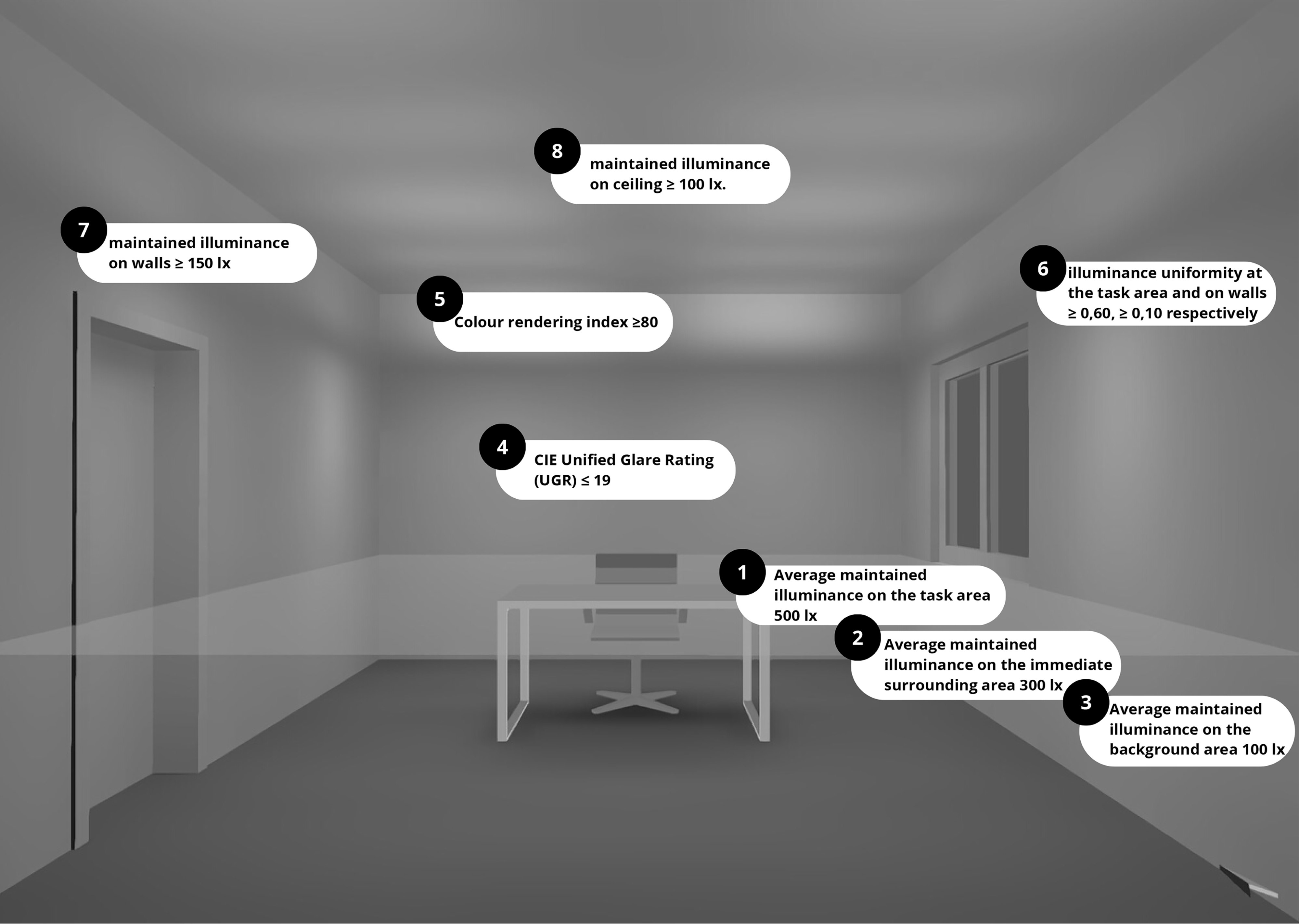 Figure 2
Figure 2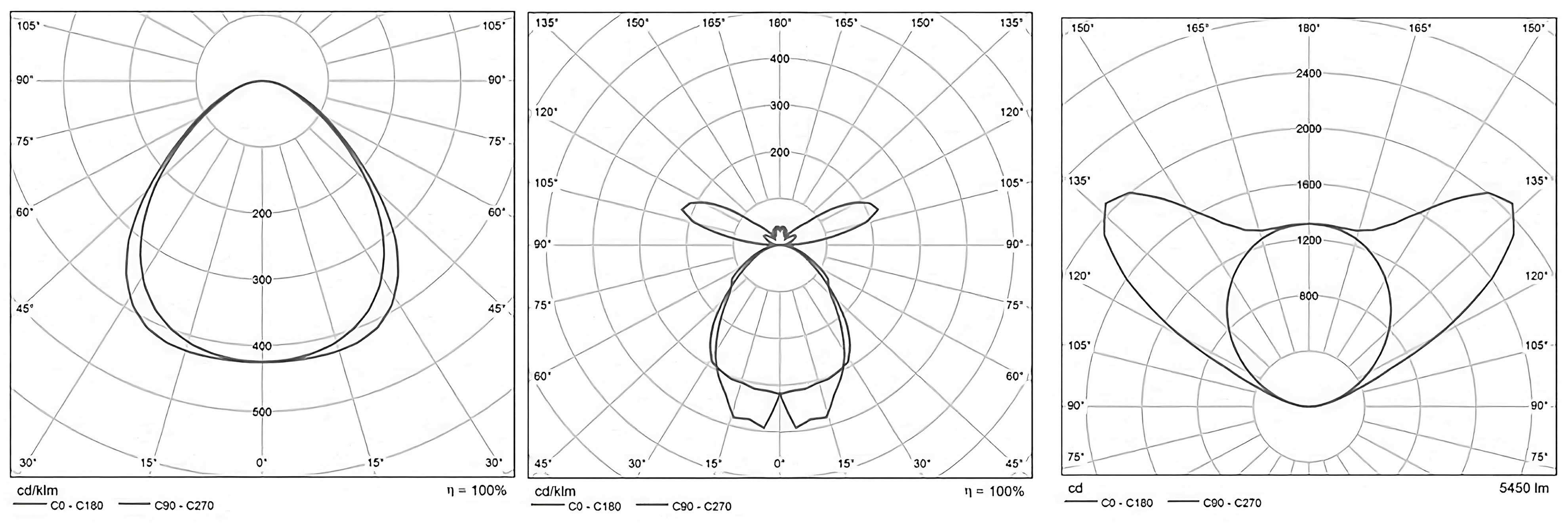 Figure 3
Figure 3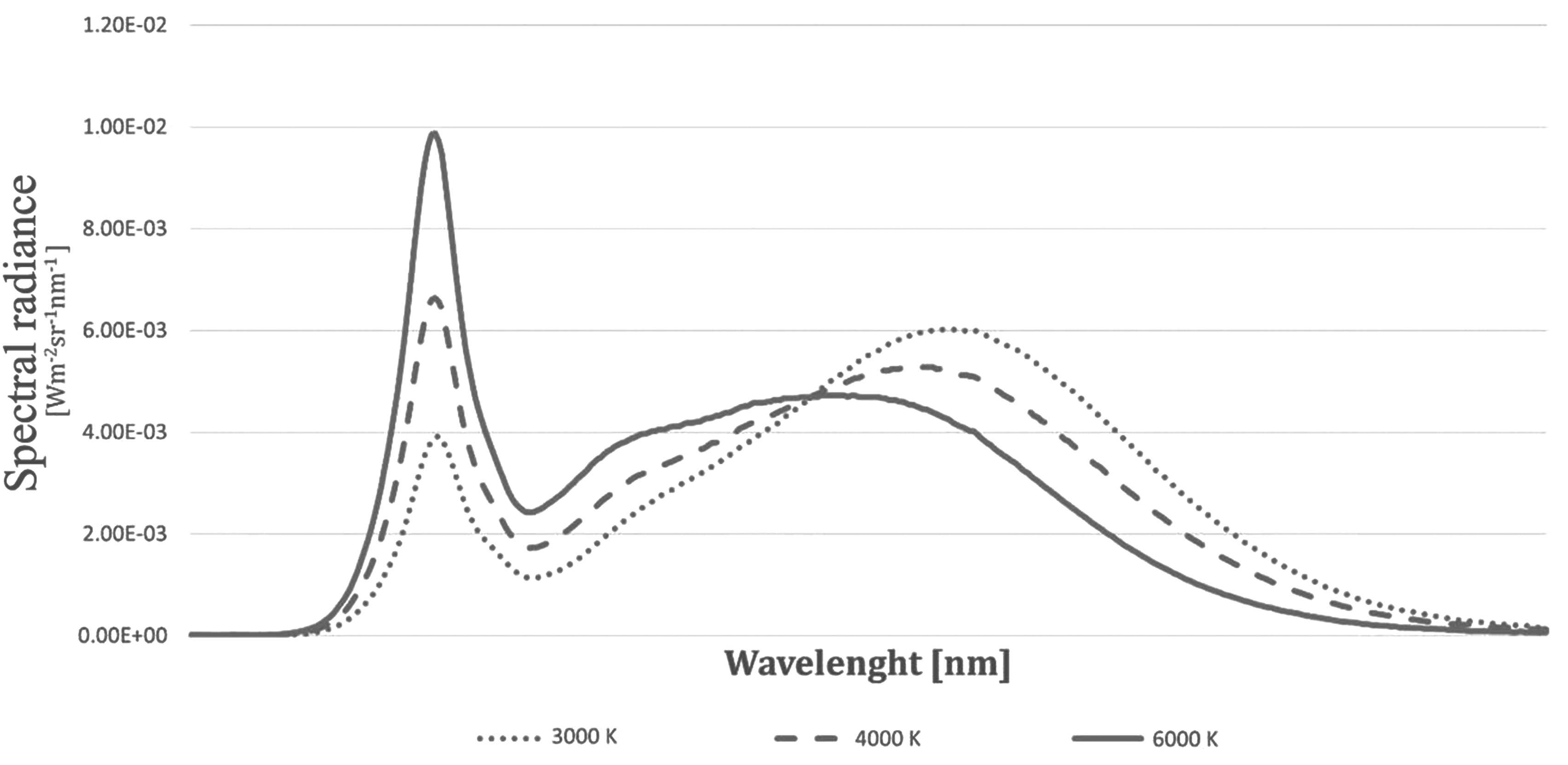 Figure 4
Figure 4 Figure 5
Figure 5 Figure 6
Figure 6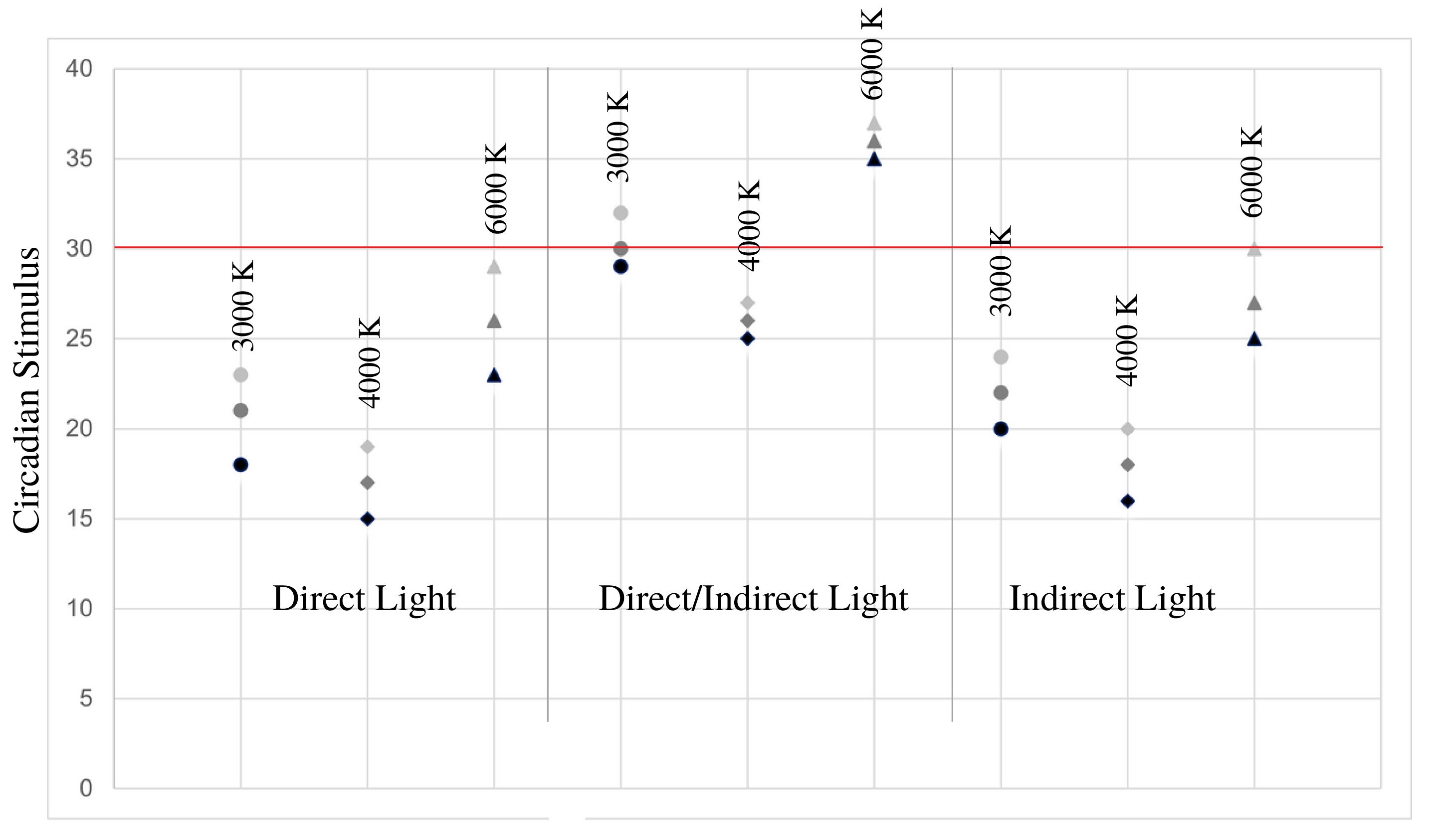 Figure 7
Figure 7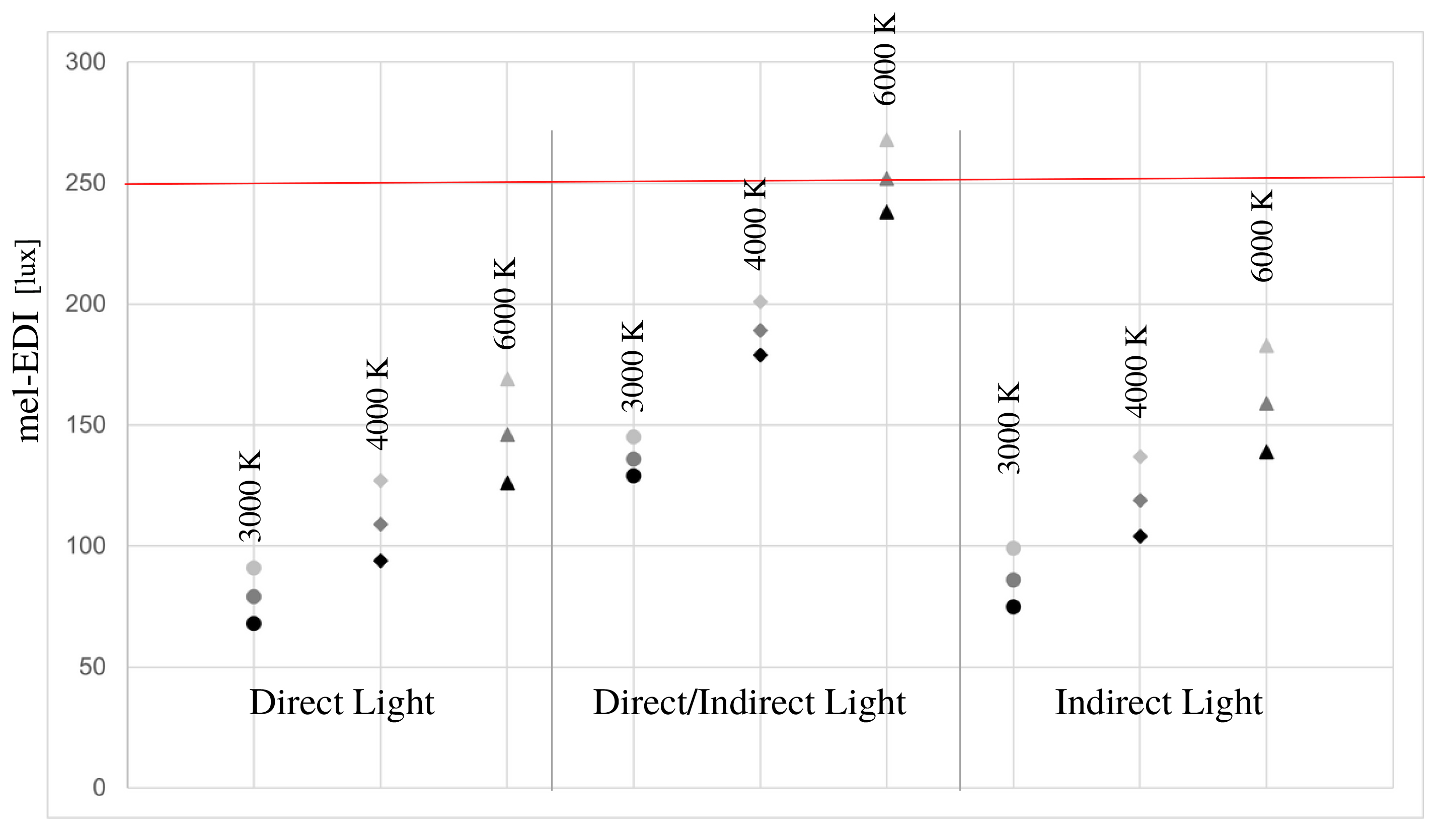 Figure 8
Figure 8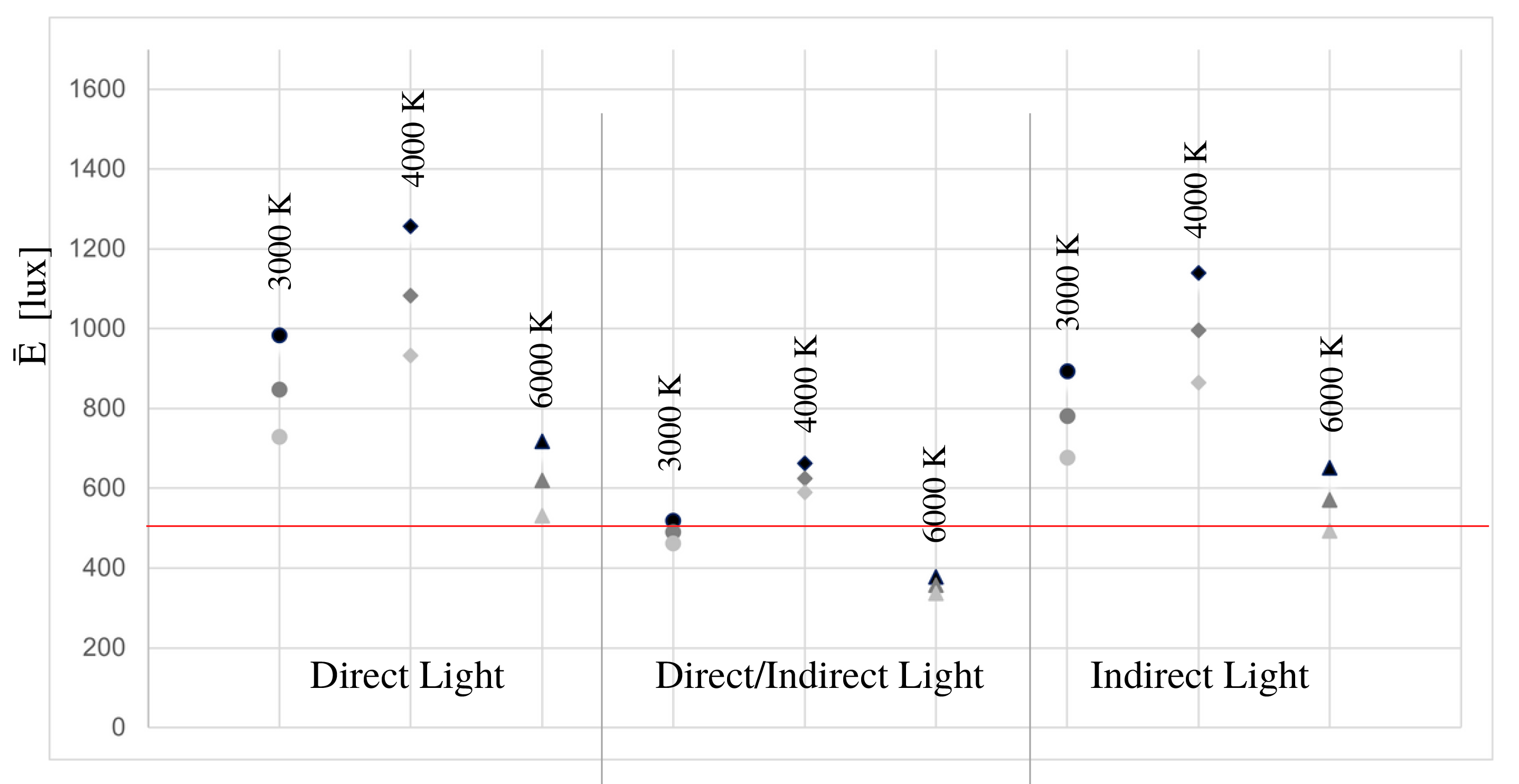 Figure 9
Figure 9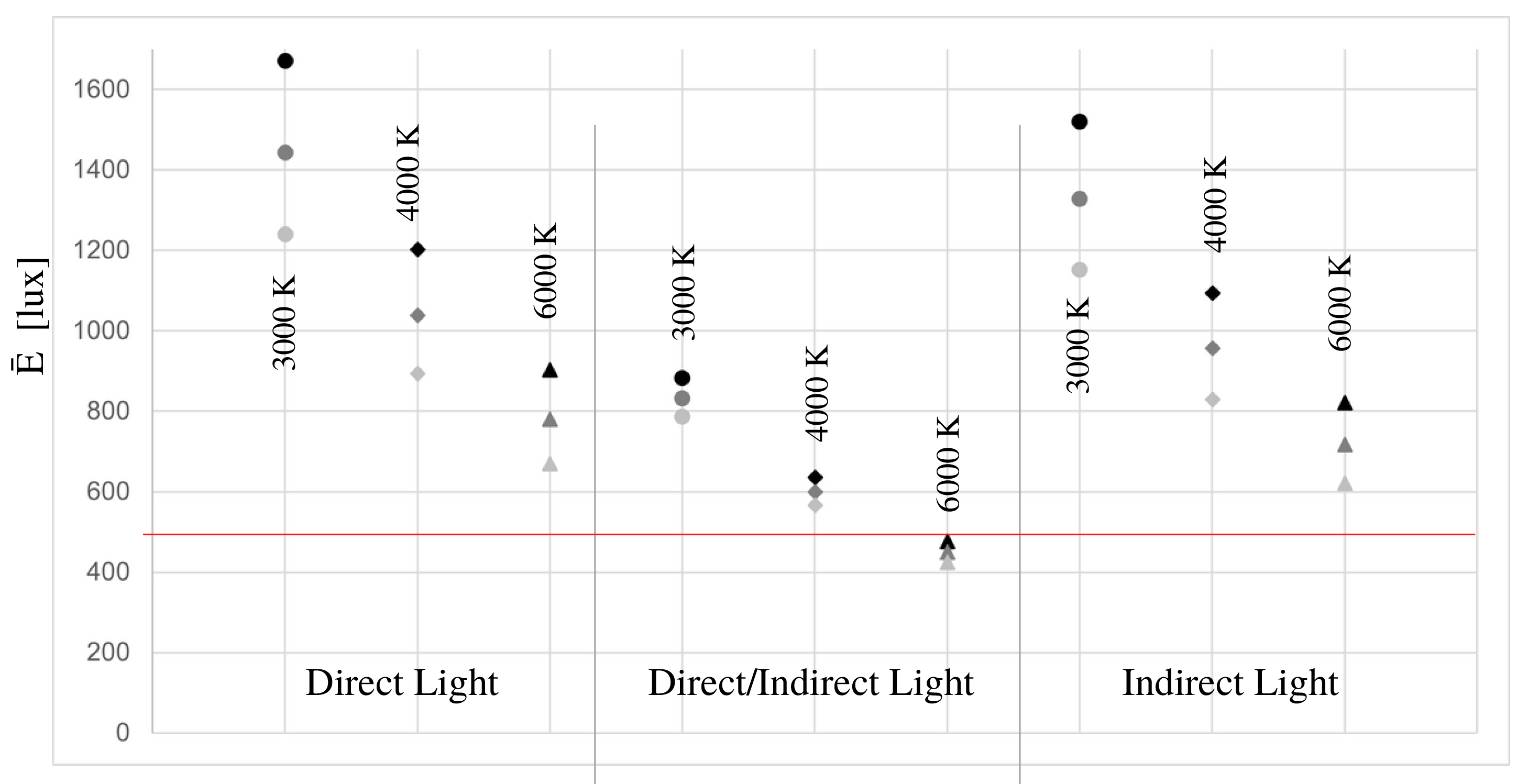 Figure 10
Figure 10 Figure 11
Figure 11 Figure 12
Figure 12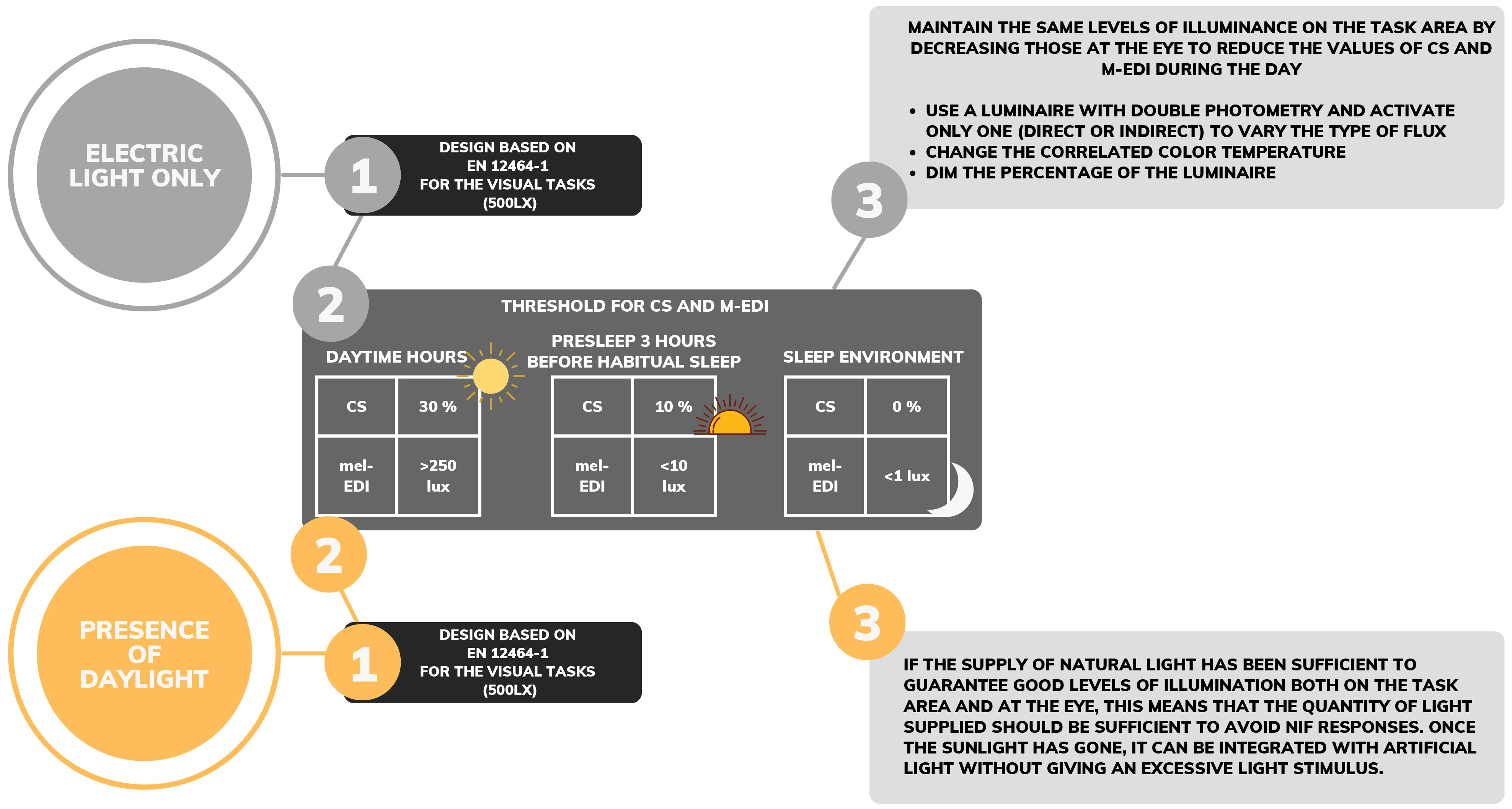 Figure 13
Figure 13 Table 1
Table 1 Table 2
Table 2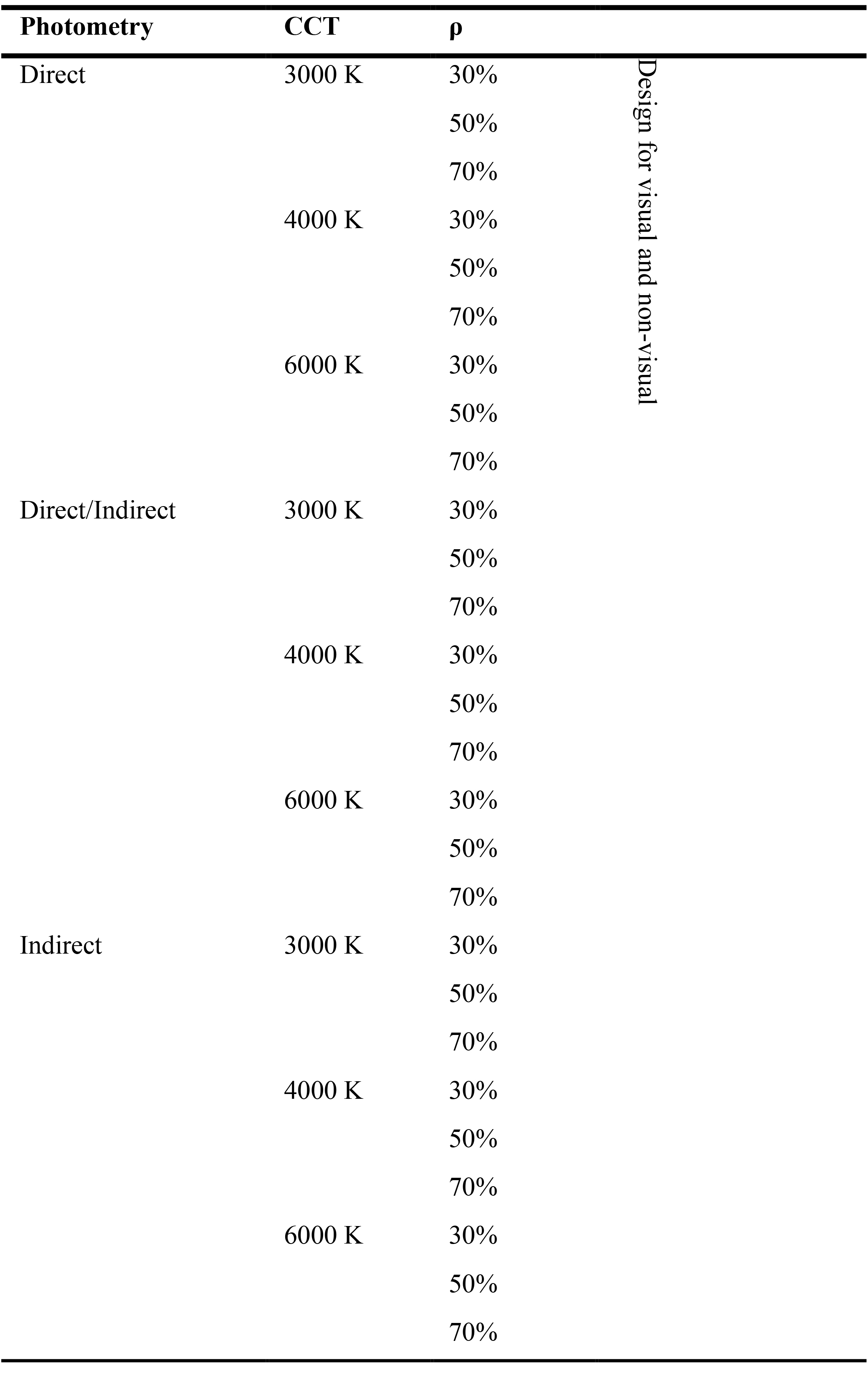 Table 3
Table 3 Table 4
Table 4 Table 5
Table 5 Table 6
Table 6 Table 7
Table 7 Table 8
Table 8 Table 9
Table 9


